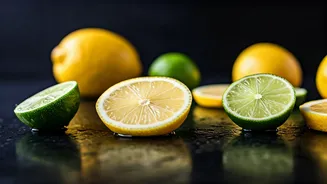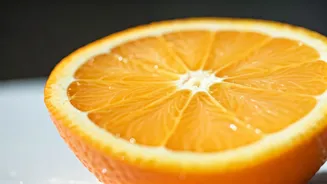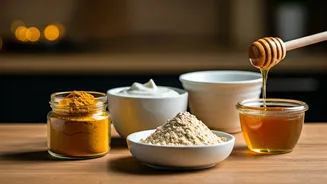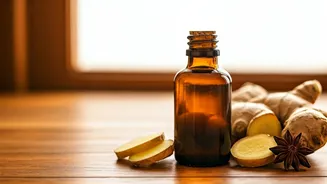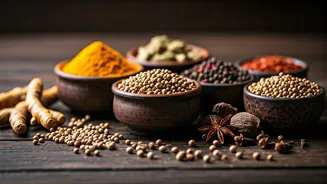Understanding Sun-Induced Tanning
Sun tanning is a common issue faced by many individuals, particularly in India, where high sun exposure is prevalent. It results from the skin's natural
defense mechanism, where melanocytes produce melanin to protect the skin from harmful UV rays. The production of melanin is triggered by sun exposure, leading to a darkening of the skin, known as a tan. The degree of tanning depends on multiple factors like the individual's skin type, sun intensity, and duration of sun exposure. This natural process, while protective, can often result in uneven skin tone and a complexion that is not desired by everyone. To effectively manage and remove tan, it's crucial to grasp the science behind it, which then leads to the most effective solutions.
Face Tan: Gentle Solutions
The face is often the most sun-exposed area, making it prone to tanning. Gentle, yet effective solutions are vital. One popular remedy involves using a paste made from gram flour (besan) and turmeric, combined with yogurt or milk. This mixture is applied to the face, left on for 15-20 minutes, and then rinsed off. The gram flour gently exfoliates, turmeric has anti-inflammatory properties, and yogurt or milk provides hydration, working together to lighten the skin. Another effective remedy is a tomato mask. The acidity of tomatoes helps to lighten the skin, and the vitamins provide nourishment. A tomato pulp is applied evenly to the face, left for 15 minutes, and then washed off. These natural solutions are gentle, making them suitable for daily use and ensuring a radiant complexion.
Hand Tan: Targeted Care
Hands, often exposed to the sun while driving or performing everyday tasks, tend to tan quickly. The skin on the hands is typically thinner than on the body, making it important to use gentle yet effective remedies. A common recommendation is to mix lemon juice and honey, applied directly to the tanned areas. The acidity of lemon can help in skin lightening, while honey moisturizes and soothes the skin. This mixture is left on for about 15 minutes before rinsing. Another option involves making a paste with aloe vera gel and a pinch of turmeric. Aloe vera soothes the skin, and turmeric aids in its lightening, leaving hands refreshed and brighter. Regular application can gradually reduce the tan and improve the overall skin tone.
Body Tan: Full-Body Routine
For effective tan removal across the body, a holistic approach is essential. This involves exfoliating, moisturizing, and using specific ingredients to lighten the skin. One effective routine involves creating a scrub with ingredients such as ground oats, yogurt, and a few drops of lemon juice. The oats gently exfoliate, yogurt provides moisture, and lemon juice helps in lightening the skin. This mixture is applied to the entire body in circular motions before showering. After exfoliating, moisturizing the skin is important. Applying a hydrating lotion or coconut oil helps restore the skin's natural moisture barrier, preventing dryness. Regular use of this routine helps to remove tan gradually, leaving the skin healthy and revitalized.
Tomato: Your Tan Savior
Tomato is a surprisingly effective natural ingredient for tan removal. Its high antioxidant content and acidity make it an excellent choice for brightening the skin. To use tomatoes effectively, they can be turned into a pulp and directly applied to the tanned areas of the face or body. Leave the tomato pulp on for 15-20 minutes, allowing the acids and antioxidants to penetrate the skin, and then rinse thoroughly with cool water. Regular application of tomato pulp can reduce the appearance of tan, as it actively works to lighten the skin. Tomatoes also contain vitamins and minerals that nourish the skin, promoting a healthy, glowing complexion, making it a gentle yet potent natural remedy.
